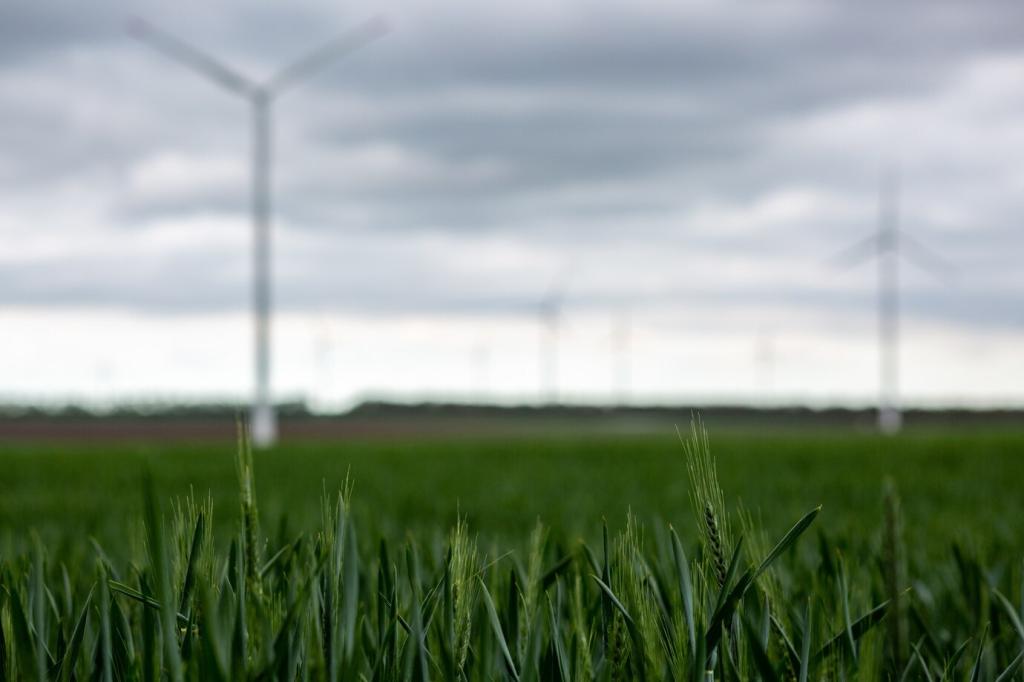
Eco-Friendly Supply Chain Innovations: Building a Cleaner, Smarter Flow of Goods
Chosen theme: Eco-Friendly Supply Chain Innovations. Step into a future where logistics, sourcing, energy, and packaging reinvent themselves to cut emissions, eliminate waste, and delight customers. Join our community—subscribe, comment, and help shape the next wave of responsible operations.
Why Eco-Friendly Supply Chain Innovations Matter Now
Imagine transforming supply chains from net emitters to net improvers. A textile supplier in Portugal co-funded solar arrays with its buyers, cutting emissions while stabilizing prices. Share your own handprint ideas in the comments and inspire others to act with you.
Why Eco-Friendly Supply Chain Innovations Matter Now
Disclosure rules like the EU CSRD and emerging Scope 3 expectations are accelerating transparency. Brands that move early secure better supplier terms, resilient capacity, and loyal customers. Subscribe for practical guides that translate policy shifts into weekly action steps.



Designing for Multiple Lives
Modular product design simplifies repairs, upgrades, and part harvesting. One electronics brand made battery swaps tool-free, turning returns into inventory rather than scrap. Comment with a product you wish were easier to repair, and we will spotlight circular redesigns.

Returns as a Resource
Reverse logistics often travels half-empty. Pooling pickups across brands and using micro-consolidation hubs can lift asset utilization and cut miles. Have you piloted shared reverse routes? Share results, and we will map proven tactics for community learning.
Powering Operations with Renewables
Rooftop solar combined with battery storage buffers peak demand and shields against outages. A regional 3PL cut energy costs 21% while meeting customer carbon targets. Curious about financing options? Comment, and we will share PPA templates in our next newsletter.

Blockchain-Backed Proof
A coffee roaster used a lightweight ledger to certify regenerative farm practices and clean shipping corridors, linking QR codes to shipment-level data. Customers paid premiums happily. Ask questions below, and we will unpack when blockchain adds value versus noise.
IoT for Real-Time Emissions
Telematics that track fuel, idle time, and temperature integrity surface carbon hotspots instantly. A fleet cut idling 19% after publishing driver scorecards. Comment with your telemetry stack, and we will compile a community-sourced toolkit for quick wins.
Open Data Standards That Scale
Common schemas and product carbon rules unlock supplier comparisons. Joining initiatives like PACT streamlines exchange and benchmarking. Subscribe to get our standards cheat sheet and avoid dead-end integrations that slow your sustainability momentum.

Cargo Bikes and Microhubs
In a dense city pilot, e-cargo bikes completed 17% more stops per hour than vans, slashing delivery emissions and parking fines. Have a neighborhood in mind? Comment with your city, and we will share a step-by-step microhub playbook.
Dynamic Routing With Carbon Costs
When dispatch tools price carbon alongside distance, routes shift to quieter streets and consolidated drop windows. Customers still get reliable ETAs. Subscribe to learn how to weight emissions fairly without wrecking service levels.
Customer Nudges That Work
Green delivery slots, pickup lockers, and small checkout prompts nudge choices gently. One retailer offered a loyalty boost for eco-slots and saw 28% uptake. Tell us which nudges you would try, and we will feature your A/B results.




Collaborating Across the Value Chain
One apparel brand funded energy audits for tier-2 dye houses, then aggregated clean-heat projects for better terms. Emissions dropped, margins rose. Share how you support suppliers, and we will compile practical training kits the community can reuse.
Collaborating Across the Value Chain
Sustainability-linked loans and preferential payment terms reward verified progress. A distributor tied working capital rates to fleet electrification milestones. Subscribe to access sample clauses that align incentives without creating red tape.


Measuring What Matters
Map categories, prioritize hot spots, and use spend-based estimates only as a bridge to supplier-specific data. We have a simple workbook—comment to receive it and start quantifying progress credibly this quarter.
Measuring What Matters
Count avoided emissions, durability, and reuse rates, not just planted trees or recycled tons. A packaging swap mattered less than route consolidation. Subscribe for our monthly metric makeovers that convert noise into insight.
